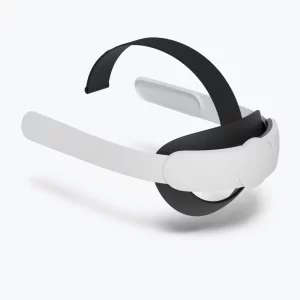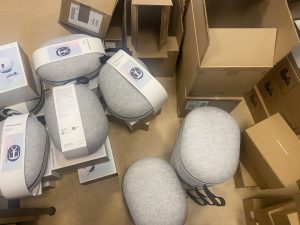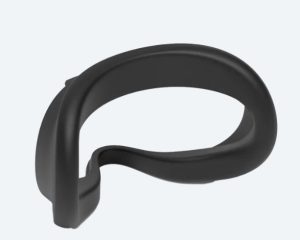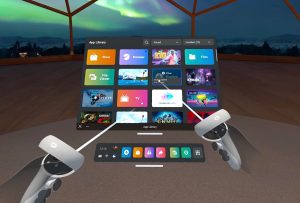3 Chapter 3: Beyond the teaching, there is still much to consider.
Dr Geraldine McDermott
It’s one thing to decide that you’d like to use immersive technologies within an educational context; it’s another thing to get a project like this off the ground. We found out very quickly that there was a significant investment of time needed before we could use the VR devices with students. This section explores additional considerations associated with VR in an educational context.
What to buy

While we knew we needed the headsets (that much was obvious!), we got invaluable advice from our colleague Dr Martina Cleary about the ancillaries. The Elite Hard Strap would make it more comfortable to wear the HMD for extended periods of time. We also bought Silicone Covers so that we could wipe them after each use, and they have lasted well.
Set up

The set up for Meta VR devices necessitates a little forward planning. A Meta account is generally required to use the device, and we had 9 Quest 2s to set up. We created a Meta account for each headset using a Gmail address (we didn’t want to connect to personal Facebook or Instagram accounts), and the email addresses and passwords were stored in a shared Excel file so that the project team could access them at any stage. Then I downloaded the Meta app on the phone and connected the Quest VR headset to the phone via the app. Make sure Bluetooth is on for this, and don’t close the app while it’s connecting to the device. Once this step is complete, you can connect the VR headset to WiFi. While connecting to a hotspot or residential WiFi was straightforward, connecting to Eduroam was not without challenges.

WiFi infrastructure
Most higher education institutions use Eduroam and TUS is no different. However, we could not get the headsets to connect to the Eduroam network and often resorted to using hotspots for demos and training sessions with small groups. Thankfully, we had the help of two Computer Services colleagues, and they were invaluable. Get to know your Computer Services team—you will need them! By the end of this project, we were able to connect to Eduroam and it made using the headsets much easier, so that should be your goal.
Storage
Another consideration for those hoping to use VR headsets within their teaching is the storage and charging of headsets. We ordered the Syntech hard case and it really helped keep the headsets safe while in transit. However, while it was feasible to store the 9 headsets in an office, it’s worth considering where to store them if you are purchasing bigger numbers. A server rack was suggested as an option for us, and we have since purchased one for another VR project, but you’ll need to think about where this will be. Lots of HEIs are opting for makerspaces, where students come to a fixed location to use the VR headsets. This eliminates the need to transport headsets to different classrooms.
Charging
Charging the headsets involved unpacking them on the kitchen table before a class/training session and using an extension cable. We also forgot to specify that we needed a UK (Type G) plug when buying the headsets and ended up with a European (Type E) plug instead. We got around this by buying a European to UK plug adapter but would recommend specifying what you need when you order the headsets. Also, there are a lot of updates for the Quest VR headsets! We would recommend checking this before you want to use them with students. You won’t be able to use them while they are updating, and it can take a while.
Maintenance
Each time one of the project team identified an app that they wanted to use, these were individually installed on the headsets. While this is a straightforward process to access the App Store and install apps, it does take some time, so you’ll need to allow for this. With bigger numbers of headsets, it might be worth considering a device management platform. Meta for Education was launched in 2024, while ArborXR is also worth exploring.

Additionally, some of the apps are free, while others require a subscription, and you’ll need to consider whether it’s more beneficial to get a per-device licence or per-user licence. We opted to use free apps only if they could meet the learning objectives but invested in apps such as 3D Organon (Anatomy) if we felt the free version was insufficient, choosing the per-device licence option. Some apps such as Virtual Speech are better with a per-user licence, as students get individual feedback on their performance.
So to recap, here’s our recommendations for VR equipment:
- Meta Quest 3 (not available when we were starting out, but definitely a better option now)
- Silicone Cover
- Elite Strap
- Storage Case
It may be worth shopping around for alternatives, but this should be the basic package for anyone considering using VR for teaching and learning.

